Indie Monthly: April 2025
Something for everyone this Spring.

The big video game news of the month was the long-awaited announcement of Nintendo's Switch successor system, a move formally kicking off the new hardware season.
The announcement makes this a good time to reflect on the ever-shifting role the Switch played in the indie market. For a few years, it was seen as something of a promised land for small developers, a way to get around Steam's notoriously bloated marketplace. Some developers - mainly those in old-school genres long associated with Nintendo, such as platformers and action-adventure - reported exceptional results beyond their expectations.
However, the perceived value of a Switch port seems to have diminished in recent years. Between the aging of the hardware, poor eShop design, and the rise of other portable systems, more small developers have been passing on Nintendo. In retrospect, it's hard to say how much the Switch helped overall, which in turn makes it hard to predict how the successor system will affect small games.
But why fritter away our time talking about hardware when there are games to discuss? Spring brought a bumper crop, with a large array of very diverse games. Jumbled though they may be, a few interesting threads run through this month's games, with innovative hybrid platformers, positional mechanics, surreal humor, and game worlds with impermanent death.
As always, you can check out the Find the Fabulist YouTube channel to see footage of the games in action.
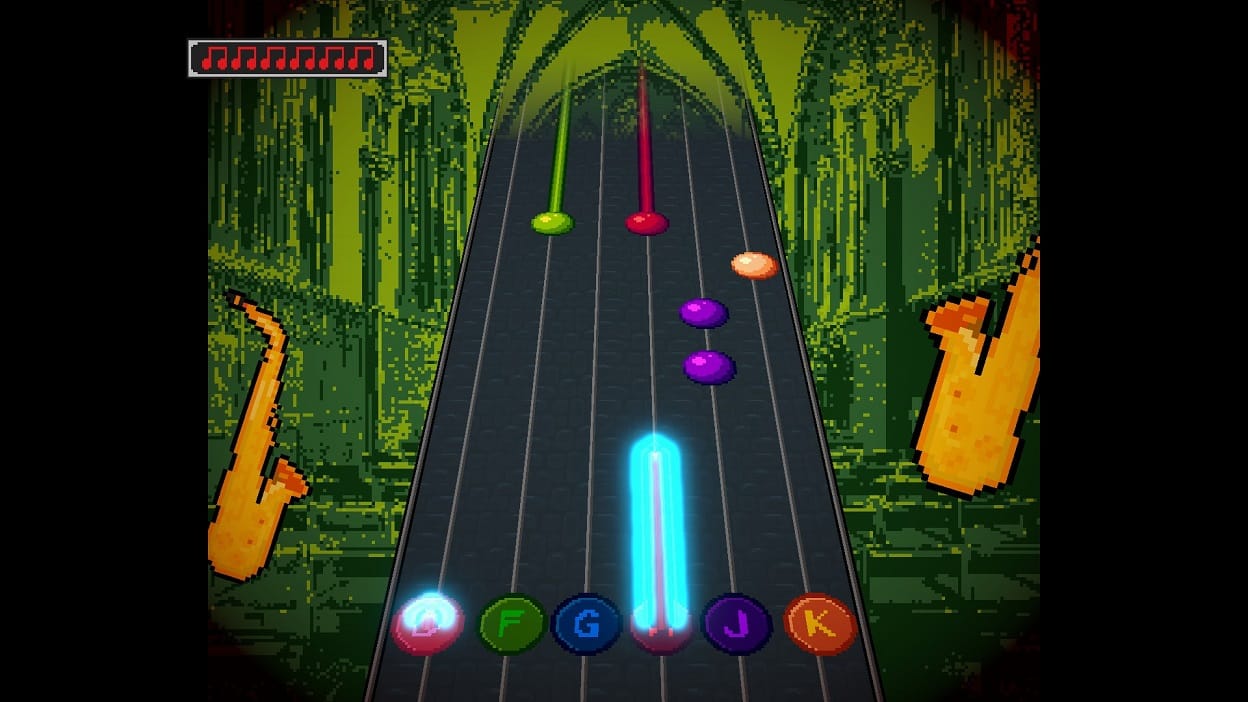
Game Over - A Musical RPG??
Game Over is a rhythm game set in a surrealistic, satire-infused world on the edge of a strange disaster. It's an interesting ride for anyone skilled enough to navigate the combat.
You are the young hero returning triumphant from your extremely standard adventure. The evil dragon is dead, the princess is rescued, the lair is destroyed, and peace and prosperity have returned to the land. Life seems like it's going back to the mundane - that is until reality itself abruptly starts falling apart. Time, space, and sensibility are all bent out of joint, and the only way out is to go on another quest to put it all right.
The core gameplay in Game Over is built around a rhythm game. Aside from the standard mechanics, many fights add additional elements, such as screen-obscuring effects or special button types that require the player to hit an additional key. All fights are preset and such gimmicks are a standard feature of the combat.
The musical aspect is by no means limited to combat; most puzzles are built around music, sometimes just as theming, but others require the player to match pitch, tone, or rhythm. Music plays into the setting as well. Each region of the game world is themed to a type of instrument, with each character having an instrumental "voice" that changes tempo and volume based on context.
Game Over is definitely a game meant for music buffs, but more specifically for veterans of rhythm games. While the first few battles are very forgiving, the challenge level ramps up in a hurry, with more notes, longer songs, and more complex gimmicks. Of course, if you're just interested in seeing how weird Game Over gets, there is a difficulty setting that makes it play itself.
This is a weird game, by the way. Game Over revels in surrealism, absurdity, and parody. Almost everything in the game is making fun of something - music styles, film genres, video game franchises and tropes, cultural oddities, and anything else that lands in the developer's path. The bizarre nature of the plot is bound to be one of its main draws, even if it can be a little bit on the nose at times.
Overall, Game Over is worth a try simply to experience the farce, but it's definitely worth testing your skills before jumping into the deep end.
Game Over is available for PC via Steam. A copy was provided for this review.
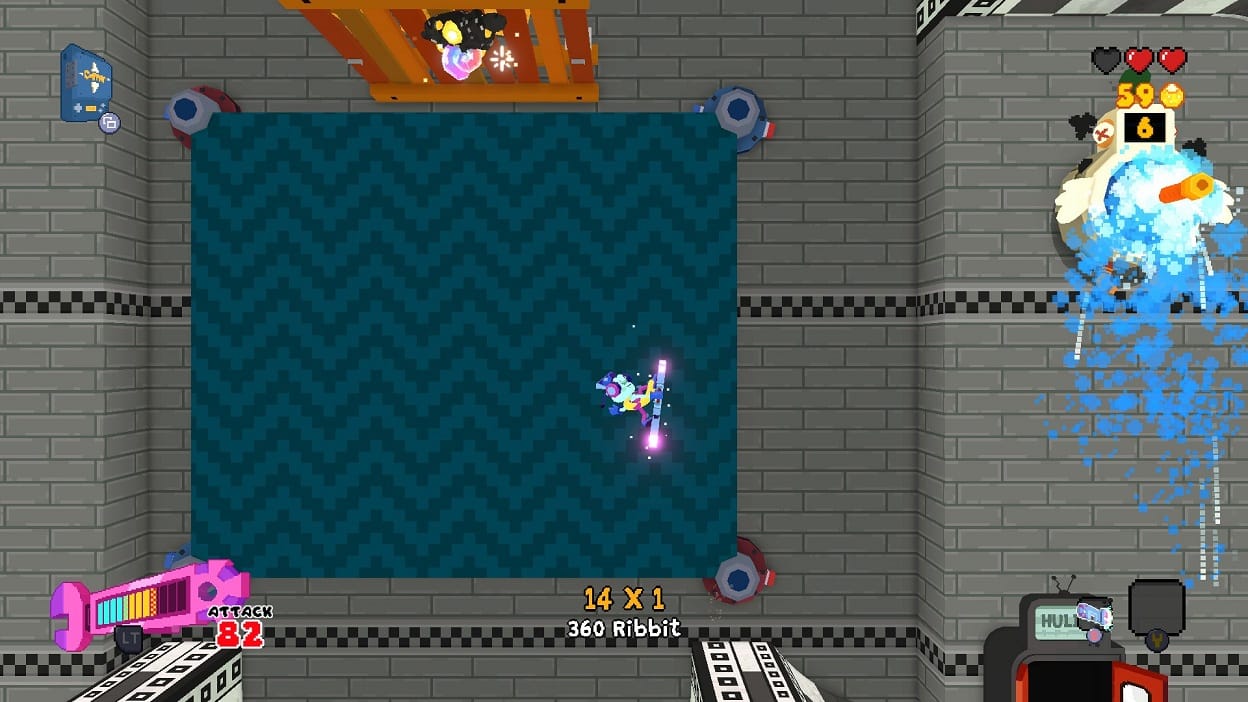
Seafrog
Seafrog is a 2D platformer that plays like a hybrid of a fifth-generation collect-a-thon and a Tony Hawk's Pro Skater title. It's a familiar feeling game with some wild mechanics and tight controls that elevate it above other throwback platformers.
The player explores a series of stranded ships, collecting the golden barnacles needed to power the player's ship. In true collect-a-thon fashion, that's only the start of it - there are plenty of other collectibles, including keys to open new levels, gears to fix machines and allow for greater navigation in the hubs, magical stones to reveal ghostly objects, and master gears needed to escape once and for all. Also scattered around are mod chips, which offer a simple yet robust adjacency-based system for upgrading and customizing the protagonist.
Where Seafrog differs from its 90s predecessors is in the protagonist's mode of locomotion. Rather than moving on foot, the main character carries an oversized wrench that he can ride like a skateboard. Aside from making him faster than most platformer heroes, the wrench also features a limited boost that lets the player defy some mundane laws of physics, moving up vertical surfaces and even upside down for short periods.
If you've ever played a skateboarding game, you're already going to be familiar with the control scheme. Seafrog features just about everything you'd find in one of those games - rail grinds, manuals, and even a simple system for performing aerial tricks. Linking up combos recharges the boost meter, filling it fast enough that a talented player will rarely be without speed. The controls and the physics system built around them are easy to figure out, and even novices will be zipping around levels in no time.
The world of Seafrog is surprisingly large. While there are only a few ships to explore, each one features an extensive series of nested hubs holding collectibles and entrances to smaller levels that contain even more pickups. There are well over a hundred areas, including everything from standard platforming challenges to trick attacks, combat, timed levels, and bosses. Expect to spend a good 10 hours with the game, more if you're going for 100% completion.
Overall, Seafrog is a fascinating blend of old-school design, aesthetics, and sensibilities with new ideas and some modern polish. It's a strong recommendation for anyone who's into platformers.
Seafrog is available for PC via Steam. A copy was provided for this review.
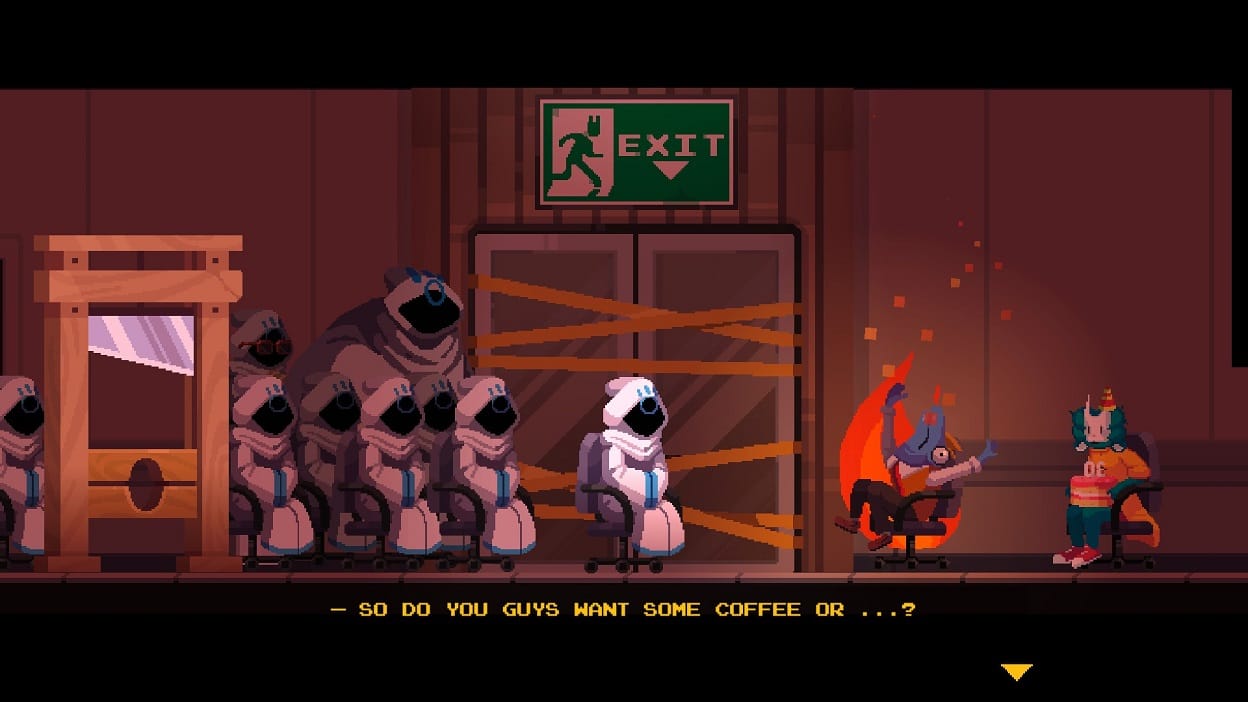
PEPPERED: an existential platformer
PEPPERED is a story-driven platformer following one unlikely hero's efforts to save the world while the world tries to stop him. It includes a heavy focus on choices and absurdist humor that distinguishes it from similar titles.
One hundred years ago, a visitor from another world imprisoned the God of Death, banishing his influence forever. Since then, society has become a middle-aged paradise where no one ever stays dead. Keeping the God of Death at bay requires a ritual by that extraterrestrial visitor, but this time he didn't show up. The apocalypse is mere hours away - but for you, a new intern, that doesn't matter. You may be tempted to take matters into your own hands and save the world, but if you do that, then who will be left to make the coffee?
The focus of PEPPERED is on the story, which doesn't mean that the developers skimped on the mechanics. After avoiding some early bad endings in the short introductory section, the player is launched into a typical 2D precision platformer with a few little quirks. Since the God of Death is, for the time being, still confined, death is not forever. The protagonist (who does canonically die a few times) always respawns with the game in the same state and thus has to live with the consequences of said death. In some cases, it can be necessary to tactically die in order to advance to the next screen.
But let's return to the story because that is where PEPPERED really shines. As you might have guessed, this is a game driven by comedy, mostly surrealism and farce with a little light social commentary thrown in for effect. Most of the jokes are jabbing at the protagonist's overly rigid society, one that places absolute adherence to the rules over their own ongoing survival. It doesn't stray away from heavier topics, though, and PEPPERED also has a few choice things to say about the nature of death and free will.
The story is enhanced by the game's aesthetic design. PEPPERED features some gorgeous sprite work, with large, highly-detailed character sprites even for characters who don't appear all that much. The music is also solid, avoiding the usual neo-retro cliches and instead going with more whimsical tunes that really complement the absurdity of the plot.
PEPPERED sticks the landing with its jokes a lot better than most humor-driven games, and for that reason alone it's worth a look. Put simply, if you're a fan of humor but don't like the way it's done in most video games, this one is definitely worth checking out as it is head and shoulders above the typical comedy game.
PEPPERED is available for PC via Steam. A copy was provided for this review.
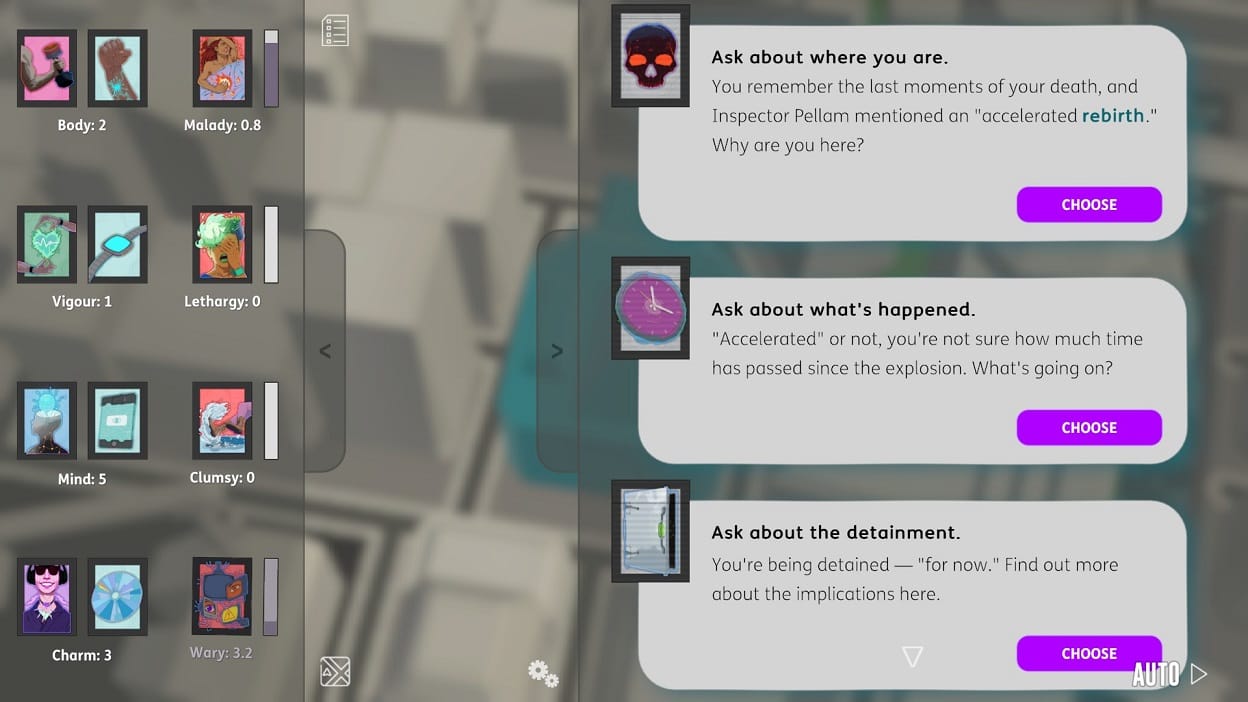
Alcyone: The Last City
Alcyone: The Last City is a near-apocalyptic visual novel (VN) centered on the intrigue and secrets of a far-future settlement on the edge of oblivion.
The outpost called "The City" is the last bastion of existence. Outside its secure barriers, a reality-unmaking phenomenon known as "Nihility" has consumed all of known space. Inside the City, life is strictly regimented, with a population kept stable through cloning and a system dominated by six quasi-noble Houses of skilled workers. You are the latest clone to emerge into the City, ready for a predictable life - until you are unwittingly drawn into a conspiracy that could transform or destroy the City forever. Reality itself now rests in your hands.
The core mechanics in Alcyone will be familiar to fans of text-heavy RPGs and VNs. After a short character creation sequence, the protagonist is launched into the City to begin unraveling the story. The narrative isn't strictly linear - there are a few sidequests, and the protagonist may end up on a few different mainline paths depending on their background.
The protagonist acquires equipment that changes their stats, which in turn can be used to complete sequences. Options are seldom locked off by stats (though they can be restricted based on background or previous choices), but there is an element of randomness wherein actions may be more or less likely to succeed based on stats. Failing a skill check or picking certain options can result in the player gaining maladies, a kind of negative skill. The widespread use of cloning in the City means that death is somewhat impermanent, but it is still possible to get a Game Over if the protagonist has a malady go too high.
The story of Alcyone is largely focused on its setting, though player choice affects how the protagonist navigates the world and, ultimately, what their goal is. One with a more highborn background might choose to meddle in the internal politics of the Houses, while an outsider might reject that and instead seek a means of escaping the system. Overall, the story trends toward a more fantastic and far-future flavor of sci-fi and will appeal best to fans of similar literature.
Alcyone: The Last City is available for PC via Steam and Itch.io, for Android via Itch.io, and for iOS/MacOS via the App Store. A copy was provided for this review.
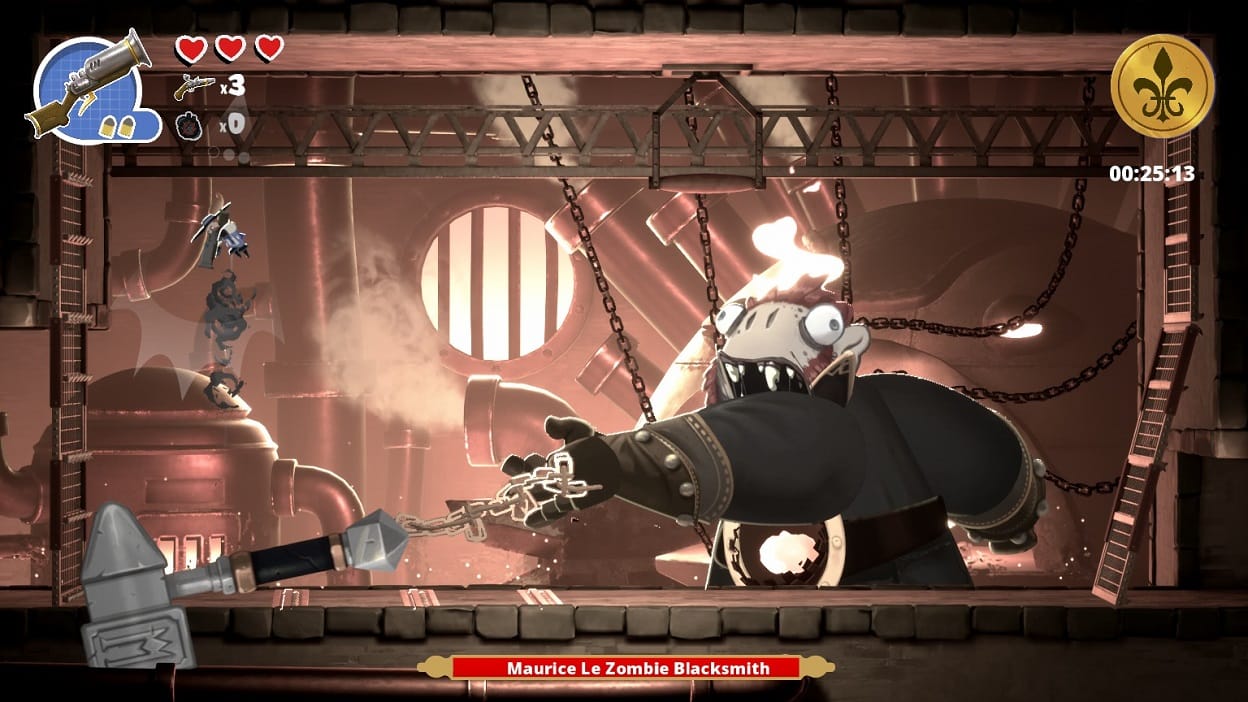
Sacre Bleu
Sacre Bleu is a precision platformer casting the player as a 17th-century Musketeer of the Guard trying to escape from the Bastille after being falsely accused of treason. It's a silly, over-the-top game with a design built around the hero's ability to quickly change directions in midair.
The protagonist has access to a variety of weapons and tools, but his signature device is his blunderbuss. This fires a spray of nonlethal shot that displaces anything it hits while also knocking the main character in the opposite direction. Firing this in the air allows the character to gain altitude or swiftly change trajectory in mid-air. Ammunition is infinite, with the lone restriction being that the player can only fire it three times before landing. The game helpfully goes into extreme slow motion when using the blunderbuss (or any other aimed weapon), which makes precise maneuvering much easier.
The blunderbuss comes into play for both exploration and navigating the game's frequent platforming challenges. As with any modern precision platformer, these sections require very tight maneuvering and there's not a lot of room for error, but things are a little bit more forgiving than they usually are in games like this. It helps that these challenge sections are short, with generous save points and unlimited lives.
Aside from the platforming, there are also some fairly technical combat sections. The protagonist has access to a sword, handgun, grenades, and the ability to toss enemies while still being able to use the blunderbuss to redirect projectiles and knock enemies into hazards. The bigger combat segments play into a combo system that rewards the player for speed, efficiency, and variety in dispatching enemies.
Sacre Bleu is explicitly designed to be speedrun friendly, with the developers openly inviting people to break the game and seek out new exploits to push for ever shorter times. The game features a built-in timer and a leaderboard for each individual stage. One can certainly enjoy this game without getting lost in the technical side, but the brief and intense levels are definitely meant to be replayed and mastered.
Overall, Sacre Bleu is exactly what one would want from a precision platformer, with speed, fluidity, and variety in the challenges.
Sacre Bleu is available for PC via Steam and for Nintendo Switch. A copy was provided for this review.
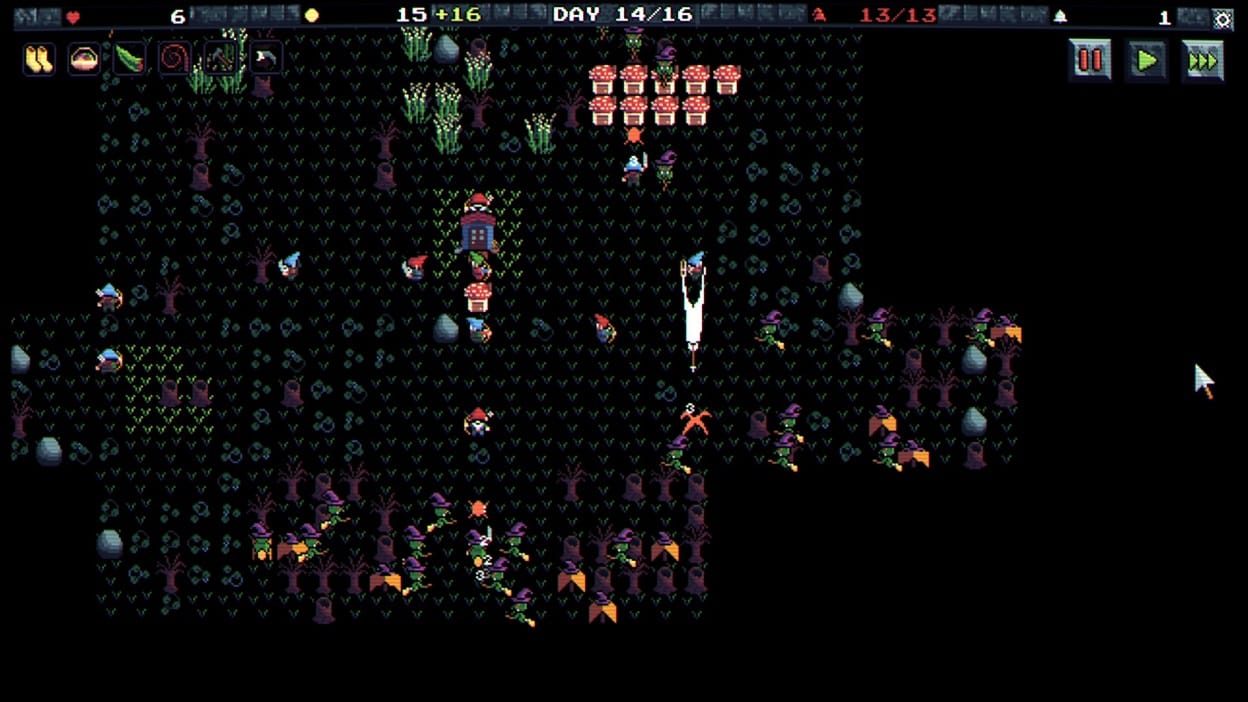
Gnomes
Gnomes is an experimental tower defense (TD) game built around a novel twist: The enemy mobs don't have a single fixed path, but a highly flexible one that the player can manipulate.
At the beginning of each day, goblin encampments appear in one or more locations around the player's base. The player's goal is to fend them off by hiring gnomes - this game's equivalent of towers, save that they can be freely repositioned. Goblins head for the base via the shortest possible route, but they will reroute if their initial path is blocked. This is the core of the game's strategy - by carefully placing gnomes and buildings, the player can force the goblins to take a long, perilous route through ambushes and obstacles.
Because the enemy spawners appear in different locations on each day, it isn't always possible to create a single bottleneck, particularly toward the end of each run when there can be well over a dozen widely dispersed spawners per day. Flexibility is critical to success. Since the player's offense isn't locked to the spot as in most TDs, it's easy to change the defensive line in response to a new threat.
Money is another novel point for Gnomes. Money is the core resource used to place buildings and gnomes and to purchase bonus-granting relics. However, unlike most TDs, the player does not gain money by killing enemies. Crops produce money passively between days and are the main source of income, adding some management elements to the formula. These crops must be protected, as goblins can trample and destroy them on their march toward the base. It's important to control their routes to avoid damaging anything that yields revenue.
Given how much Gnomes deviates from the usual TD formula, it's remarkable how easy it is to pick up on strategies. Most runs don't rest on a single perfect strategy, but rather trend toward a "make the best of what you have" feel similar to many roguelike RPGs. It's challenging but generally fair enough that players can win even with subpar upgrades. Overall, it's a great addition to the TD field and worth trying even if you're not normally a fan.
Gnomes is available for PC via Steam. A copy was provided for this review.
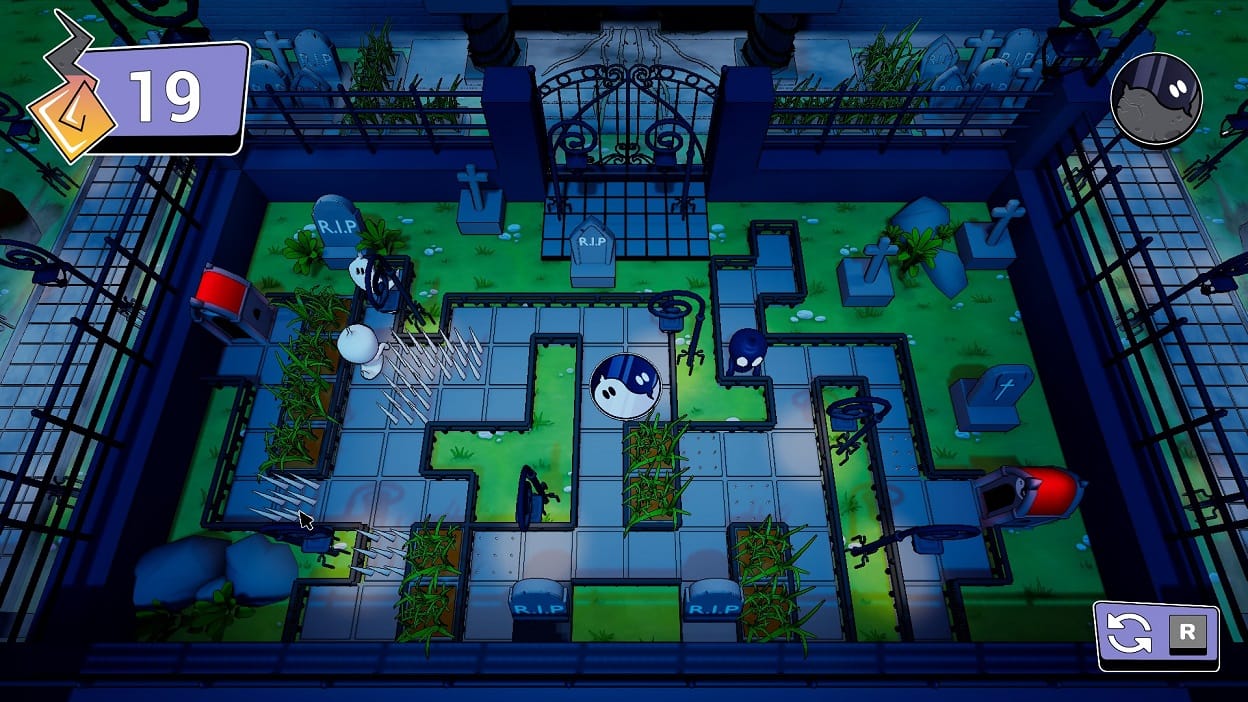
Jin & Jan
Jin & Jan is a puzzle game that forces the player to guide multiple protagonists through trap-filled boards. It's a deceptively challenging title that can require some real multitasking skills.
The central premise of Jin & Jan is straightforward enough; the two titular characters start at opposite sides of the screen, with the player controlling them simultaneously. The white spirit Jin follows the directional inputs exactly, while the black spirit Jan moves in the opposite direction. The goal in each level is to unite the two in a central area within a set number of moves, with the optional objective of tracking down pieces of a yin-yang symbol that unlock challenge stages.
There are a range of hazards to make this more difficult. These include fixed traps that kill the spirits if they enter the tile, cycling traps that switch between deadly and harmless with each move, firing hazards that attack anything passing in front of them, and enemies that move around on fixed paths. Levels featuring both fixed and moving obstacles - such as spikes and enemies - can be more challenging than they appear, as the player needs to carefully chart out their route while also moving quickly and with precise timing.
The overall presentation of Jin & Jan gives an impression of a casual or all-ages game, but it quickly becomes quite difficult. In isolation, none of the puzzles are too difficult. However, the need to solve them while dodging projectiles and keeping an eye on both spirits in different parts of the screen turns most levels into exercises in attention splitting. And while most levels are generous enough with their move counts that there are multiple - and relatively safe - solutions, getting the collectibles in each level requires tighter planning and usually some risky moves.
Overall, Jin & Jan is a good fit for fans of casual puzzle games who've become experienced enough that they need something more challenging.
Jin & Jan is available for PC via Steam. A copy was provided for this review.
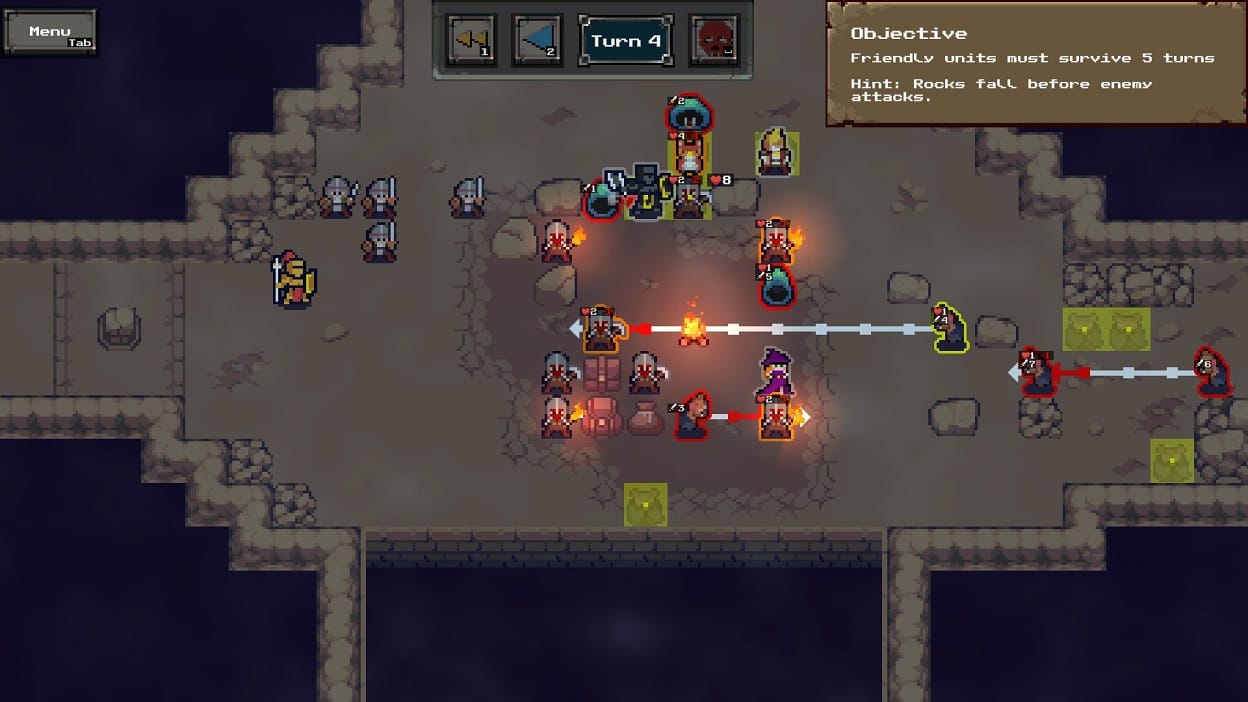
Dark Pact
Dark Pact is a console-style TRPG with a heavy focus on character positioning. The displacement mechanics give it a distinctive puzzle game flavor, setting it apart from other throwback RPGs.
The sorceress Liesel is the scion of a noble family long ago disgraced by its association with the dark arts. Forced to make a living as a soldier of fortune, she and her underlings receive an enticing offer: A nearby kingdom is threatened by a dragon, and the king is requesting Liesel's assistance in retrieving and delivering the treasure to be used as ransom. In exchange, she'll be restored to her old social position. But there's more to the situation than a simple adventure, and Liesel soon learns that dark forces are manipulating the situation for reasons unknown.
The player controls a party of four characters, accompanied by a party of computer-controlled allies, including soldiers and noncombatants who lack even the survival instincts to move out of harm's way. Party members don't gain levels or experience, though they do unlock new skills at story-appropriate moments. In general, the goal in each stage is to survive for a set period without incurring any friendly deaths, though a handful of levels mix this up.
The key combat mechanics are all built around positioning and displacement. Nearly every move usable by the party will push, pull, lure, or otherwise move one or more targets. This can be used to bait enemies into attacking each other a la Into the Breach, but the tight survival requirements mean that just as often you'll be using these skills to push vulnerable noncombatants out of harm's way. This leads to some tricky tactics, as you may occasionally have to intentionally attack and injure an ally to move them out of an enemy's line of attack.
The defensive-oriented nature of Dark Pact's levels means that while the game may resemble something like Fire Emblem or Shining Force on the surface, it plays more like a hybrid of one of those titles with a puzzle game. Fortunately, the encounter design is loose enough that there are often many possible solutions, so you're not trying to guess what the developers want you to do.
Dark Pact definitely has a different feel than your typical TRPG, but it should appeal to the same audience and is worth a try if you're comfortable with something out of the norm.
Dark Pact is available for PC via Steam. A copy was provided for this review.
That wraps up our look at all the indie games that caught our attention in April. Be sure to come back each month for more of those sweet, sweet indie games you need to know about!
